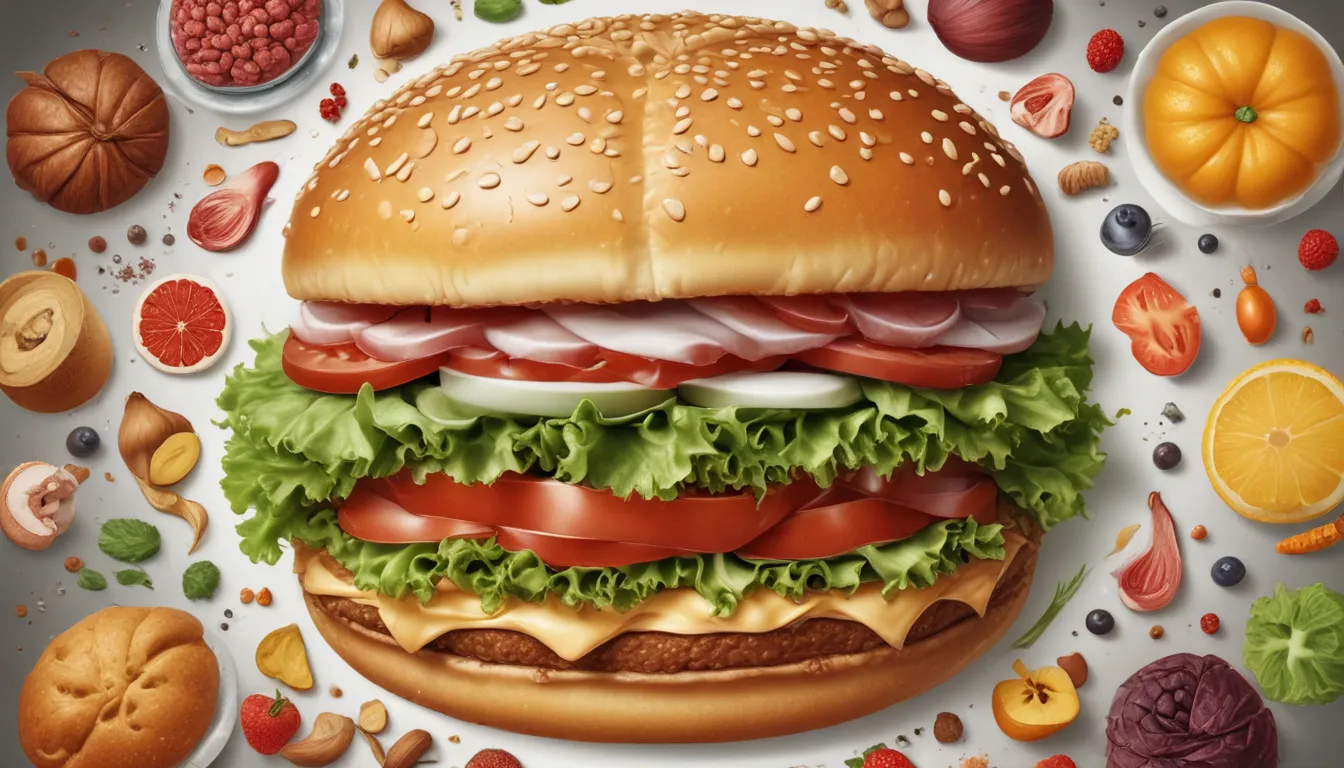A Note About Images: The images used in our articles are for illustration purposes only and may not exactly match the content. They are meant to engage readers, but the text should be relied upon for accurate information.
Have you ever wondered how we perceive the flavors, aromas, and textures of the foods we eat? The field of sensory evaluation dives deep into this fascinating realm, combining the principles of biology with the art of gastronomy. Through the study of our senses – taste, smell, sight, touch, and hearing – we can unravel the intricate relationship between our sensory experiences and the foods we consume.
Exploring the Fascinating World of Sensory Evaluation
Sensory evaluation of food is not just about the simple act of tasting; it is a complex and vital process that influences food quality, consumer preferences, and innovation in the food industry. By understanding how our senses work together to interpret the characteristics of food, we can gain valuable insights into our culinary experiences.
Key Takeaways
- Sensory evaluation uses our senses to judge and improve food quality, ensuring it meets consumer preferences and maintains high standards in the food industry.
- Trained panelists and consumer testing play a vital role in sensory evaluation, helping food producers understand and meet consumer preferences while driving innovation in the food industry.
Unraveling the Purpose of Sensory Evaluation
The primary purpose of sensory evaluation is to assess the sensory attributes of food, including taste, smell, appearance, texture, and overall palatability. By doing so, we can understand and measure consumer preferences, enhance product quality, and ensure customer satisfaction, ultimately shaping the food products we enjoy.
The Human Senses at the Core of Evaluation
Our senses are key players in the sensory evaluation of food, providing us with valuable information about the characteristics of the foods we consume. From the sight of a dish to the aroma that wafts from it, each sense contributes to our overall perception and enjoyment of food, making the sensory experience truly multidimensional.
The Role of Trained Panelists in Evaluation
Trained panelists are essential for accurate and reliable sensory evaluation. These individuals undergo rigorous training to develop their sensory skills, enabling them to detect subtle differences in food attributes. Their feedback provides valuable insights to food producers and researchers, driving improvements and innovations in the industry.
Objective vs. Subjective Evaluation Techniques
In the realm of sensory evaluation, two main approaches exist: objective and subjective techniques. Objective techniques involve scientific instruments and measurements to assess food attributes objectively, while subjective techniques rely on human judgment and perception to evaluate food attributes subjectively, offering a well-rounded perspective.
Balancing Quantitative and Qualitative Analysis
Sensory evaluation harnesses both quantitative and qualitative analysis methods to capture the essence of a food product. Quantitative analysis assigns numerical values to sensory attributes, enabling statistical analysis, while qualitative analysis delves into descriptive terms and language to depict the sensory experience comprehensively.
Consumer Testing: A Vital Component
Understanding consumer preferences and perceptions of food products is a key goal of sensory evaluation. Consumer testing methods, such as blind taste tests and preference ranking, provide valuable feedback directly from consumers. This data guides food producers in making informed decisions about product development and marketing strategies.
Ensuring Quality Control and Assurance
Quality control and assurance are integral aspects of the food industry, and sensory evaluation plays a crucial role in maintaining consistent quality standards. By evaluating sensory attributes consistently, producers can ensure that their products meet desired standards, building consumer trust and loyalty in the process.
Fostering Continuous Improvement and Innovation
Sensory evaluation not only maintains quality but also propels continuous improvement and innovation in the food industry. By analyzing sensory data and feedback, producers can identify areas for enhancement, explore new flavors, and create innovative products that cater to the evolving preferences of consumers, driving positive change in the industry.
Embracing the Future of Sensory Evaluation
As we navigate the captivating world of sensory evaluation, we uncover the vital role it plays in shaping the food industry. From understanding consumer preferences to driving innovation, sensory evaluation underscores the importance of creating high-quality, appealing food products that delight consumers worldwide.
In conclusion, the art of sensory evaluation of food unveils the intricate interplay between taste, smell, and perception, offering a deeper understanding of how our senses interact with the foods we consume. Through scientific exploration, we unlock profound insights into our sensory experiences, shaping our culinary journey and enhancing our appreciation for the foods we love.
FAQs: Navigating the Realm of Sensory Evaluation
-
What is sensory evaluation of food?
Sensory evaluation of food involves using human senses to assess and analyze the properties of food products, providing insights into sensory attributes, preferences, and overall acceptability. -
Why is sensory evaluation of food important?
Sensory evaluation aids in product development, quality control, and consumer preference studies by enhancing taste, texture, aroma, and appearance, creating appealing and marketable food products. -
What are the different methods of sensory evaluation?
Discrimination testing, descriptive analysis, hedonic scaling, and consumer preference testing are among the methods utilized to evaluate various sensory attributes of food. -
How do sensory evaluators ensure objectivity and consistency?
Through rigorous training, standardized protocols, blind testing, sensory panel selection, and calibration exercises, sensory evaluators minimize bias and maintain objectivity in their evaluations. -
Can sensory evaluation help in identifying food defects?
Yes, sensory evaluation can detect food defects such as off-flavors, rancidity, or spoilage, enabling early detection and ensuring the delivery of high-quality products to consumers. -
How does sensory evaluation impact consumer acceptance?
By understanding consumer preferences, sensory evaluation assists in developing products that align with consumer expectations, enhancing consumer acceptance and satisfaction. -
Can sensory evaluation be used for dietary restrictions or allergies?
Sensory evaluation aids in developing alternative food products for individuals with dietary restrictions or allergies by creating options that mimic traditional foods’ sensory experience without compromising taste or texture. -
Is sensory evaluation limited to food industry professionals?
No, sensory evaluation can be explored by anyone interested in understanding food’s sensory aspects, from chefs and food scientists to home cooks and enthusiasts, enriching their culinary knowledge and experiences.
Uncover the nuances of sensory evaluation, embrace the captivating journey of taste, and delve into the essence of our sensory experiences with food. Through continued exploration and discovery, we unveil new dimensions in gastronomy, enriching our culinary adventures and transforming the way we perceive the foods we cherish.






